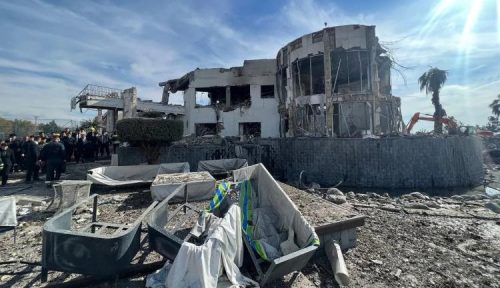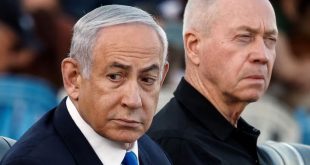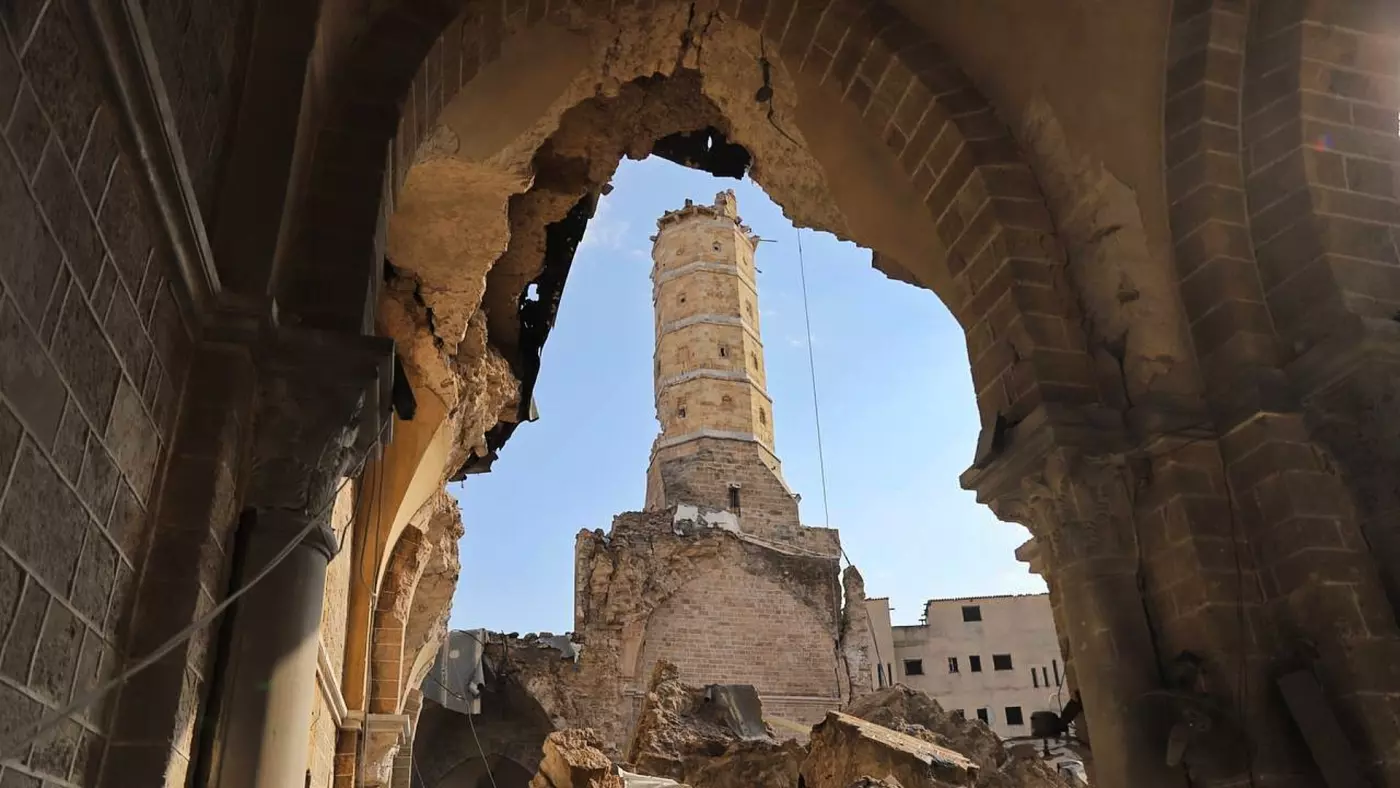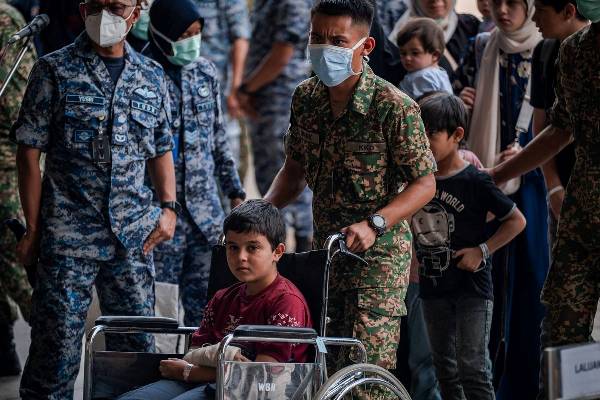 UNITED NATIONS | 18 January 2024 (IDN) — The Israeli-Hamas war has ignited a new Middle Eastern regional conflict involving the United States and the Houthis in Yemen, a militant group described as proxies for Iran.
UNITED NATIONS | 18 January 2024 (IDN) — The Israeli-Hamas war has ignited a new Middle Eastern regional conflict involving the United States and the Houthis in Yemen, a militant group described as proxies for Iran.
The Iranians have long been accused of funding and arming not only the Houthis, but also Hamas in Gaza and Hezbollah in Lebanon. The situation has been further aggravated by Iran’s new conflict with neighbouring Pakistan, a longstanding Asian nuclear power.
In a report on January 17, Cable News Network (CNN) said Pakistan has strongly condemned an Iranian airstrike inside its borders that killed two children, calling it an “unprovoked violation of its airspace” and warning of retaliation.
Iran said it used “precision missile and drone strikes” to destroy two strongholds of the Sunni militant group Jaish al-Adl, known in Iran as Jaish al-Dhulm, in the Koh-e-Sabz area of Pakistan’s southwest Baluchistan province, according to Iran’s state-aligned Tasnim News Agency.
The attack comes after Iran launched missiles in northern Iraq and Syria last week, in the latest escalation of hostilities in the Middle East where Israel’s ongoing war in Gaza risks spiralling into a wider regional conflict, said CNN.
In a statement on January 18, UN Spokesperson Stephane Dujarric said Secretary-General António Guterres “is deeply concerned about the recent exchange of military strikes between Iran and Pakistan, which have reportedly caused casualties on both sides.”
The new conflicts have renewed the longstanding speculation on Iran’s plans to go nuclear, which has also been triggered by a report released last November by the Vienna-based International Atomic Energy Agency (IAEA).
A joint statement by the US, France, Germany and the UK in late December warned that the November 2023 report by the IAEA highlighted that Iran had increased its rate of production of uranium enriched up to 60% at Natanz and Fordow to levels observed between January and June 2023.
“These findings represent a backwards step by Iran and will result in Iran tripling its monthly production rate of uranium enriched up to 60%. We remain committed to a diplomatic solution and reaffirm our determination that Iran must never develop a nuclear weapon,” the four countries declared.
“We condemn this action, which adds to the unabated escalation of Iran’s nuclear program. The production of high-enriched uranium by Iran has no credible civilian justification, and the reported production at the Fordow Fuel Enrichment Plant and the Pilot Fuel Enrichment Plant further carries significant proliferation-related risks.”
“We also take note of Iran’s decision to revert to the same cascade configuration as the one discovered by the IAEA in Fordow earlier this year. Iran’s delay in declaring this change in January 2023 cast serious doubts on Iran’s willingness to cooperate with the IAEA in full transparency”, the statement added.
In a front-page story on January 16, the New York Times warned that “while Iran has ramped up the production of uranium drastically in recent weeks, renewing fears that it may be speeding again toward the capability of fabricating several nuclear weapons, it has carefully kept just below the threshold for bomb-grade fuel. That is considered the red line that could trigger military action against its underground nuclear complexes.”
In May 2018, the US withdrew from the Iran nuclear agreement, formally known as the Joint Comprehensive Plan of Action (JCPOA),
Last week. US Secretary of State Antony Blinken told the New York Times: “I think it was a big mistake to tear up the Iran nuclear agreement. We had Iran’s nuclear program in a box. Since the agreement was torn up, it escaped from that box, and we’re now at a place where we didn’t want to be because we don’t have the agreement. So, I think that was deeply unfortunate.”
Asked for his comments, Robert Kelley, Distinguished Associate Fellow at the Stockholm International Peace Research Institute (SIPRI) told IDN by “going nuclear” I assume you mean gaining nuclear weapons? No closer than it ever has.”
He said enriching uranium is not a nuclear weapons design activity. It is materials production. 60% enriched uranium is definitely below the threshold for a useful nuclear weapon that Iran could deliver by any means other than a truck or cargo plane.
The CIA and informed analysts do not detect a nuclear weapons program in Iran. They are a well-developed country and could be lured out of complacency by activity in the region, said Kelley, a Former Director at the IAEA and Former Nuclear Weapons Engineer at Los Alamos and Livermore National Laboratories
Referring to the statement by the four big powers, that the IAEA findings represent a backwards step by Iran and will result in Iran tripling its monthly production rate of uranium enriched up to 60%—and that that the four remain committed to a diplomatic solution and reaffirm their determination that Iran must never develop a nuclear weapon, Kelley said: “This is a true statement but not useful.”
He pointed out that three times the production rate is an accumulation of material that needs further processing to be useful for a weapon. It is not useful at present for a weapon without more processing.
“If the countries were truly committed to a diplomatic solution, they would not have observed the US decision to stop complying with the JCPOA. JCPOA was an agreed international restriction, it was working extremely well, and it was the US, not Iran, that dropped out of compliance.”
“Note that the IAEA still has regular complete access to the enrichment facilities of Iran and they are the ones reporting their very detailed observations on Iran’s activities. It is truly ironic that it is the IAEA that is in the field doing regular inspections under the Nuclear Non-proliferation Treaty and that the four states are complaining about Iran! IAEA bottom line is that what Iran is doing is legal and transparent in keeping with its treaty obligations.”
 Asked about Israel, he said Israel’s ‘strength’ is that it certainly has nuclear weapons, although it resists saying so.“Is that really a strength or a weakness? It is a bludgeon that is extremely hard to use and has no solution to their current distress. By the way, Pakistan is not in the “Middle East”, but it borders Iran on the other side and Iran hit Pakistan with missiles yesterday. Iran has nuclear neighbours east and west so maybe they are nervous”. [IDN-InDepthNews]
Asked about Israel, he said Israel’s ‘strength’ is that it certainly has nuclear weapons, although it resists saying so.“Is that really a strength or a weakness? It is a bludgeon that is extremely hard to use and has no solution to their current distress. By the way, Pakistan is not in the “Middle East”, but it borders Iran on the other side and Iran hit Pakistan with missiles yesterday. Iran has nuclear neighbours east and west so maybe they are nervous”. [IDN-InDepthNews]
Photo: Iran’s attack in Pakistan territory, soon after its strikes in Syria and Iraq. Source: NDTV.
Post Disclaimer | Support Us
Support Us
The sailanmuslim.com web site entirely supported by individual donors and well wishers. If you regularly visit this site and wish to show your appreciation, or if you wish to see further development of sailanmuslim.com, please donate us
IMPORTANT : All content hosted on sailanmuslim.com is solely for non-commercial purposes and with the permission of original copyright holders. Any other use of the hosted content, such as for financial gain, requires express approval from the copyright owners.
 Sri lanka Muslims Web Portal Sri Lanka Muslims News Center
Sri lanka Muslims Web Portal Sri Lanka Muslims News Center
 Donate
Donate


